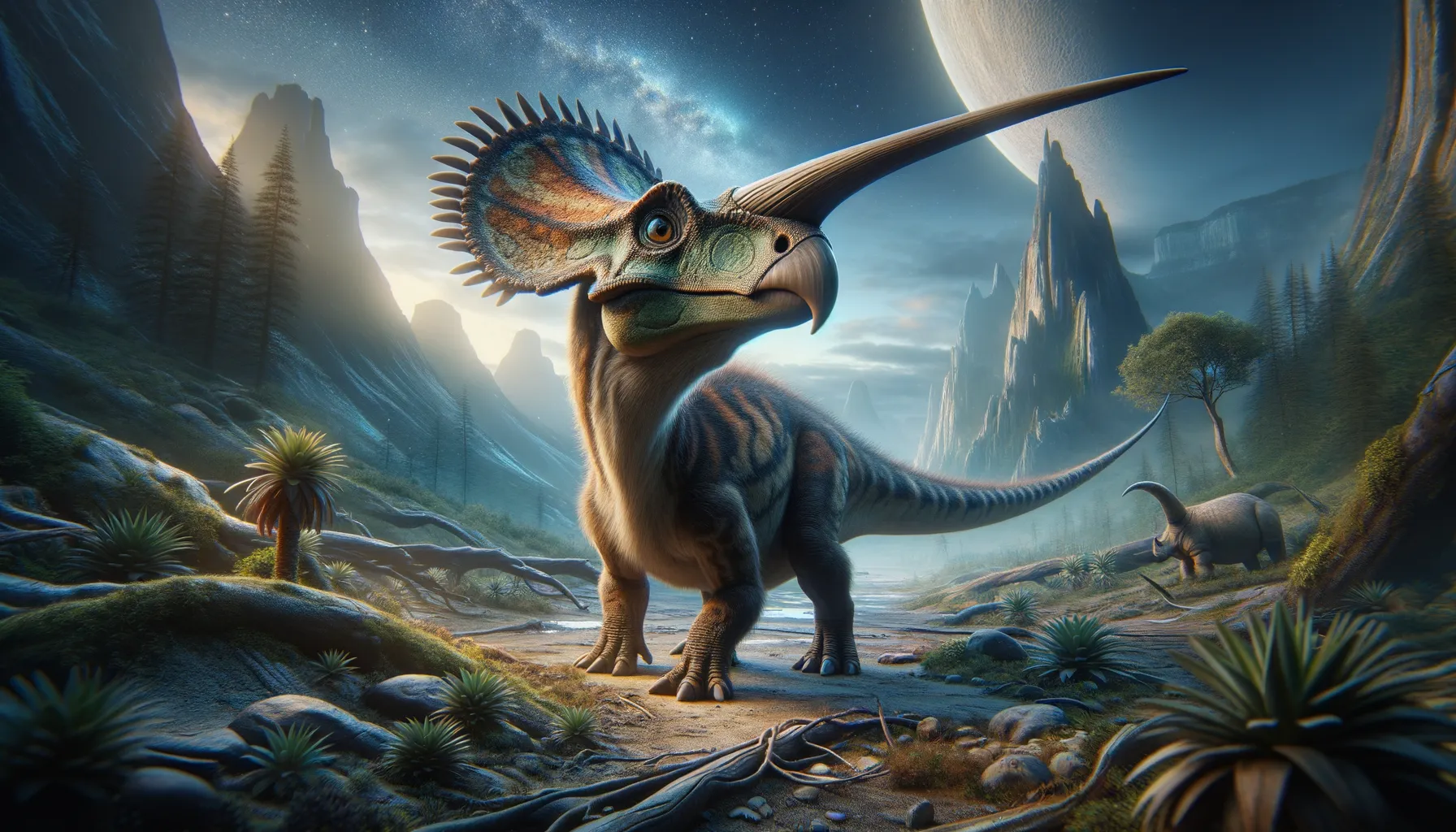
Auroraceratops
Early ceratopsian with a unique charm.
Period
Cretaceous
Length
About 2 meters long.
Height
Roughly 0.6 meters tall at the hips.
Weight
Approximately 50 to 100 kilograms.
Auroraceratops was a small, herbivorous dinosaur from the Late Cretaceous period. It is known for its distinctive hooked beak and frill, typical of ceratopsian dinosaurs. Although it lacked the large horns of its later relatives like Triceratops, Auroraceratops was an evolutionary stepping stone in this fascinating group. Its fossils have been primarily discovered in central Asia, providing invaluable insight into early ceratopsian evolution.
Diet
Auroraceratops was a herbivore, feeding on low-lying vegetation. Its beak was well-adapted for cropping plants, making it a proficient browser in its ecosystem.
Hunting
As a herbivore, Auroraceratops did not hunt. It relied on its plant-based diet and likely foraged during the day when predators were less active.
Environmental challenges
Auroraceratops faced numerous environmental challenges, including habitat changes due to fluctuating sea levels and volcanic activity. These factors could have influenced the availability of food and water resources. Climate changes might have also impacted vegetation, requiring adaptability in its feeding habits. Predatory threats from larger carnivorous dinosaurs were a constant pressure, necessitating group living as a defense mechanism.
Speed
Likely slow due to its stout build.
Lifespan
Estimated around 20 to 30 years.
First discovery
First discovered in 2005 in China.
Fun Facts
- Auroraceratops is a dinosaur that lived about 115 million years ago during the Early Cretaceous period.
- Its name means 'dawn horned face', which refers to its early place in the horned dinosaur family tree.
- Unlike more famous horned dinosaurs like Triceratops, Auroraceratops had no horns above its eyes, just a beak and a modest frill.
- Fossils of Auroraceratops have been found in what is now China, giving us clues about its life in ancient ecosystems.
- Auroraceratops was about the size of a sheep, making it a relatively small dinosaur compared to its giant relatives.
- It primarily walked on two legs, but it could also go on four to graze plants closer to the ground.
- Auroraceratops helps scientists understand the evolution of ceratopsians, which are the group of dinosaurs known for their frills and horns.
Growth and Development
Auroraceratops, like many dinosaurs, likely underwent rapid growth during its early years. This fast growth rate would help it reach a size where it was less vulnerable to predators. Its development was characterized by changes in the frill and beak structure, which became more pronounced with age. This feature might have been important for species recognition and mating displays.
Habitat
Auroraceratops lived in regions that are now parts of central Asia, consisting mainly of forested areas and floodplains. This habitat provided ample vegetation for feeding and natural protection against predators. Seasonal changes would have influenced its feeding patterns, dictating movement within its environment. The presence of water sources was vital, as it was essential for both drinking and for the growth of its food plants.
Interaction with other species
Auroraceratops interacted with a variety of species within its ecosystem, including other herbivorous dinosaurs and small mammals. These interactions often revolved around competition for resources like food and water. Social species like itself might have engaged in group behaviours to ward off predators and access better foraging grounds. Symbiotic relationships with some plant species might have helped in maintaining its habitat.
Natural lifespan
Auroraceratops likely lived around 20 to 30 years in the wild.
Reproduction
Auroraceratops, like many dinosaurs, reproduced by laying eggs. Nests discovered near fossil sites suggest communal nesting grounds, enhancing survival rates of hatchlings. Parental care might have involved protecting eggs from predators and environmental factors. The size and condition of eggs provided clues about incubation periods and hatchling development.
Social behaviour
Auroraceratops might have exhibited some form of social behavior, living and feeding in groups to enhance protection. Such social structures could help deter predators, as group members can warn each other of danger. These bonds could have extended to cooperative parenting and nest defence. Its frill and body postures would also play roles in communication between individuals.
Fossil locations
Fossils of Auroraceratops have been primarily found in the Gongpoquan Basin of China. These discoveries have been crucial in understanding the evolutionary lineage of ceratopsian dinosaurs. The fossils provide insight into its physical characteristics and living environment. Continuous excavations in Asia may reveal more about its distribution and lifestyle.
